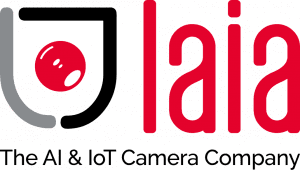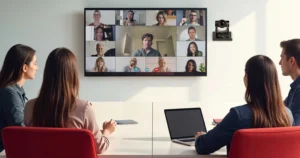BYOD: What is it and how is it transforming the workplace?
One of the most common questions among companies is what is BYOD. In today's work environment, the term BYOD (Bring Your Own Device) has emerged as an innovative practice that allows employees to use their own personal devices to perform work tasks.
Understanding BYOD: What is it? Benefits and challenges
BYOD is the strategy that allows employees to use their personal devices, such as smartphones, tablets or laptops, in their work environment. This practice has gained popularity thanks to its multiple benefits, from increasing productivity and employee satisfaction to reducing hardware costs for companies.
This method, moreover, has transcended the traditional boundaries of the office, allowing employees to work from anywhere, at any time, with their own familiar and personalized devices. In addition, with the BYOD model, the company provides employees with a set of guidelines to follow in order to use their personal devices in a safe and responsible manner. These policies typically include such things as information security, device management and employee accountability.
It should be noted that tools such as myTeam Sharera Laia product, amplify BYOD functionality by enabling wireless transmission of screen devices to meeting rooms.
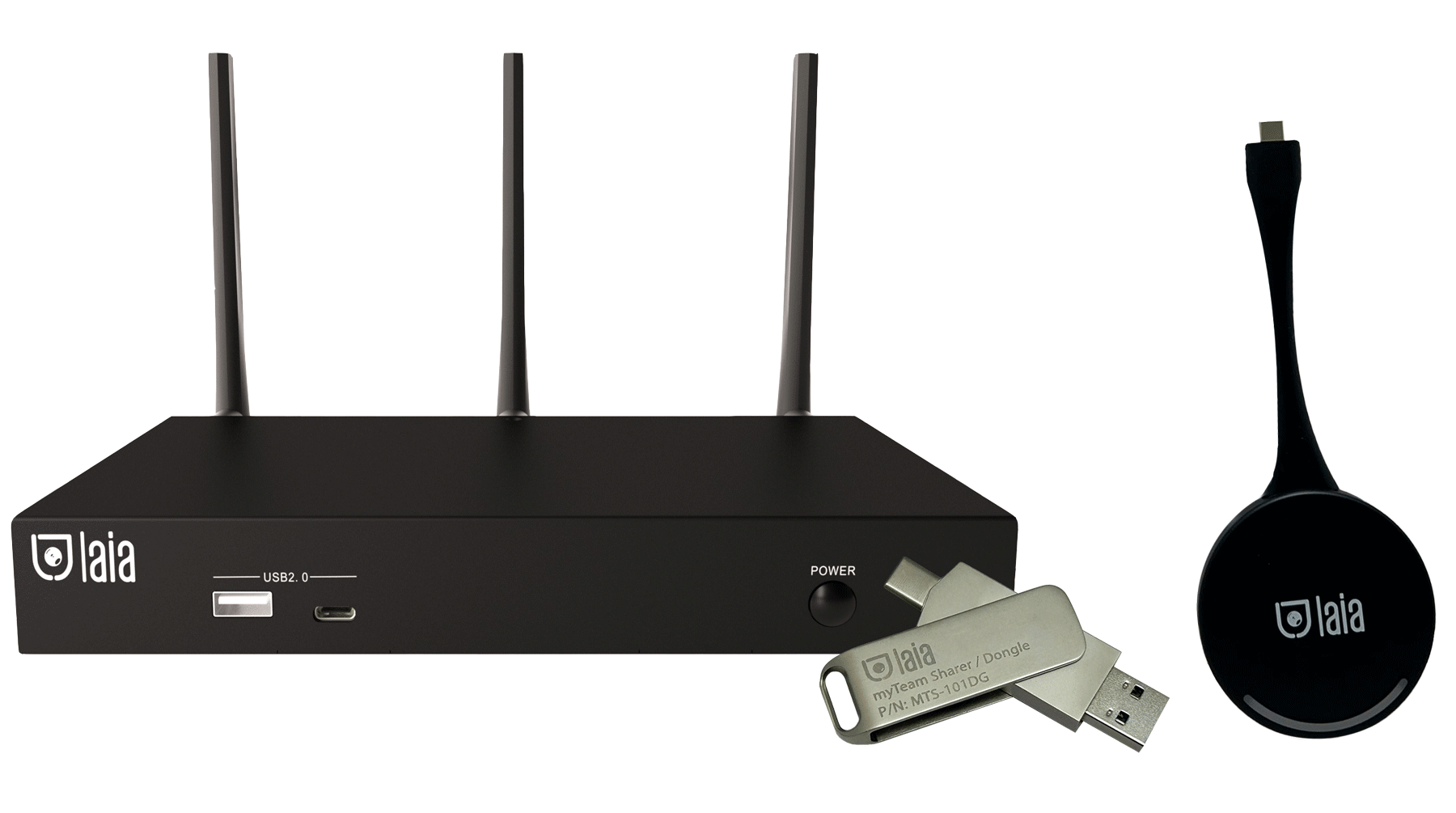
myTeam Sharer allows video conferencing and presentations, connecting all AV resources in the room. It is compatible with any camera, microphone and speaker on the market. It is fast, intuitive and efficient, without cables.
With a simple button on the dongle, the screen of computers, mobiles or tablets can be shared wirelessly, simplifying presentations and streamlining connectivity in meetings without the need for cables.
We have two types of dongles, each with its own characteristics:
- myTeam Sharer Type C Dongle:
Type C connector: to connect to a PC/laptop and share the screen.
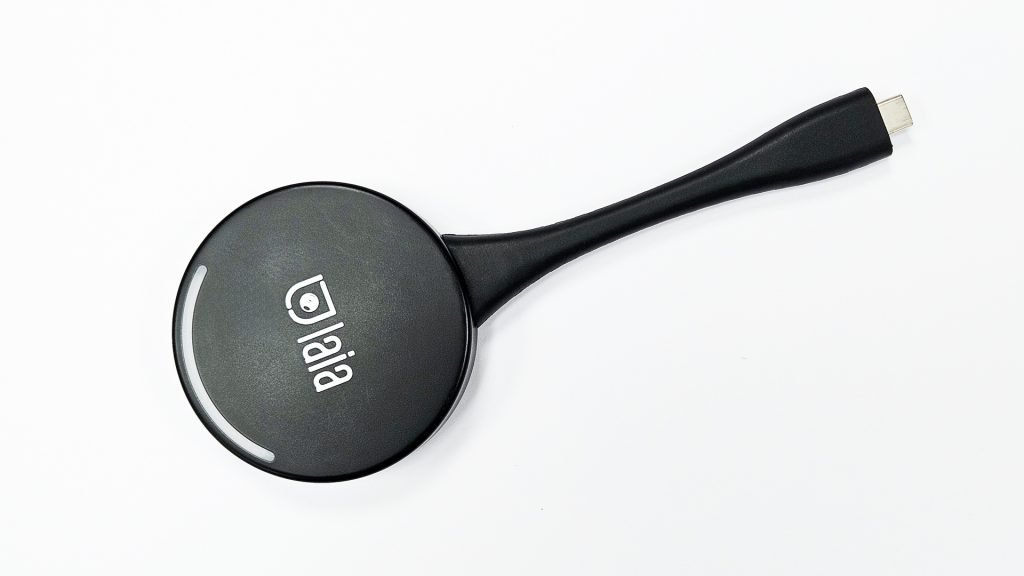
-
myTeam Sharer HDMI Dongle:
- HDMI connector: to connect to a PC/laptop and share the screen.
- USB connector: serves as power supply or for plugging into the base unit for pairing or updating the dongle.
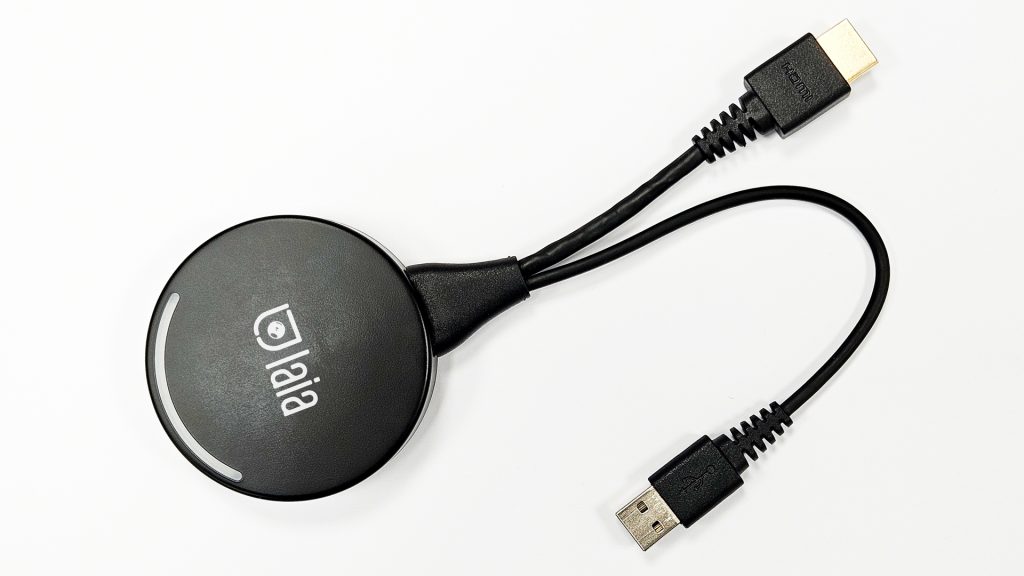
Both feature a sensor button, which initiates the display of content on the screen with a touch, and an LED indicator that shows the status of the dongle (Red: in use and Green: ready for use).
Plus, with this wireless solution, you have dual networking for maximum compatibility and security:
- Allows you to set up two separate networks (corporate and guest) for maximum security.
- Secure wireless connection with WLAN AES WPA2PSK encryption and 256/1024-bit encrypted transmission.
And with wireless innovation for all your devices:
- Up to 2, 3 or 4 simultaneous presentations on screen in 4K quality.
- Integrated digital whiteboard and export of annotations to USB memory.
Advantages of implementing BYOD
There are a number of advantages associated with BYOD implementation:
- Increased employee productivity and flexibility: BYOD allows employees to work from anywhere, anytime, which can increase productivity and flexibility.
- Improve employee satisfaction: When employees can use their own devices at work, they tend to be more satisfied.
- Cost reduction: Bring Your Own Device (BYOD) can help companies save money on hardware and software because employees do not need to use company devices.
- Saving money when purchasing devices. The company could finance part of the cost of the terminals purchased by employees if desired.
Challenges and safety considerations
Data security is a key concern when implementing BYOD. The need to protect business information on personal devices requires solid management and security strategies, such as the implementation of access policies, data encryption and mobile device management solutions. Thus, the biggest challenges encountered are:
- Information security: The BYOD movement can jeopardize the security of corporate data because employees' personal devices may be infected with malware or contain sensitive information.
- Device management: Companies should have a strategy for managing employees' personal devices to ensure they meet security and compliance requirements.
- Employee responsibility: Companies should clearly state that employees are responsible for using their personal devices in the workplace.
BYOD in Action: Examples and Success Stories
Companies in a variety of industries have successfully implemented this approach. BYOD examples such as Google and Microsoft show how this practice improves flexibility and collaboration.
GOOGLE: The company allows employees to use their own personal devices to access corporate resources such as the network, data and applications. Google uses data encryption and two-factor authentication to protect corporate information.
MICROSOFT: While the company allows its employees to access corporate resources with their own personal devices, it also provides them with corporate devices if they wish. MDM mobile device management, which is a device management solution that builds on Windows' built-in management capabilities, and data-at-rest and data-in-transit protection are some of the security measures Microsoft has implemented to protect corporate data.
The Future of BYOD and its Impact on the Workplace
It is anticipated that BYOD will continue to transform the work environment, focusing on security and interoperability for mass adoption in enterprises.
This is due to a number of reasons, including the growing popularity of mobile devices, companies' need for flexibility and increasing awareness of information security.
Interoperability, i.e. the ability of various devices and systems to work together seamlessly, will be another crucial factor in the growth of this practice. This means that corporate systems and personal devices will become more compatible with each other. Companies will look for solutions that facilitate collaboration and data sharing among employees, regardless of the device they use.
That is why LAIA offers a solution that can help companies improve interoperability between personal devices and enterprise systems. myTeam Shareras mentioned above, is a wireless collaboration solution that is compatible with any device with a USB port. Making it easy for employees to share content from their personal devices in meeting rooms, regardless of the device they are using.
Conclusion
In short, Bring Your Own Device (BYOD) is a disruptive approach that redefines the way companies manage employee productivity and connectivity.
By incorporating innovative solutions such as Laia's myTeam Sharer, which enhance wireless connectivity in meetings and presentations, the trend to transform the work environment is evident.

